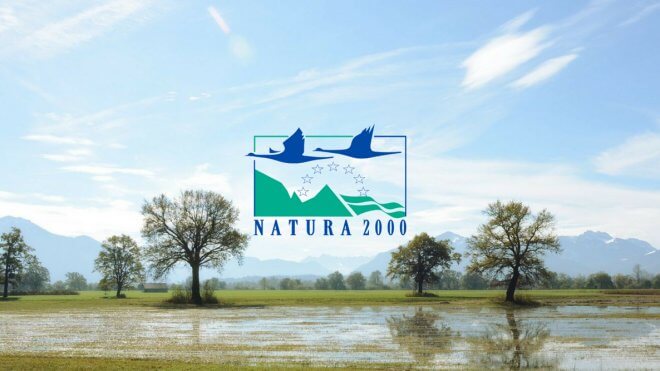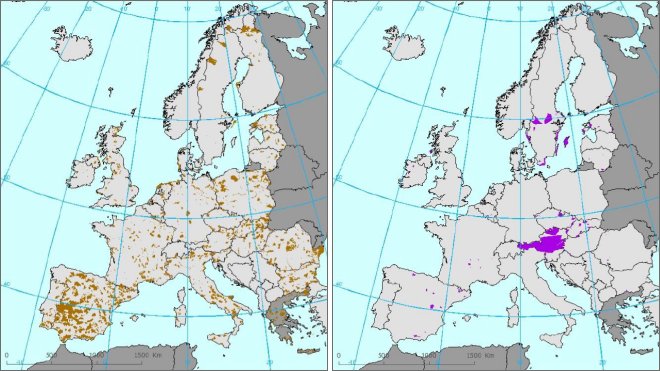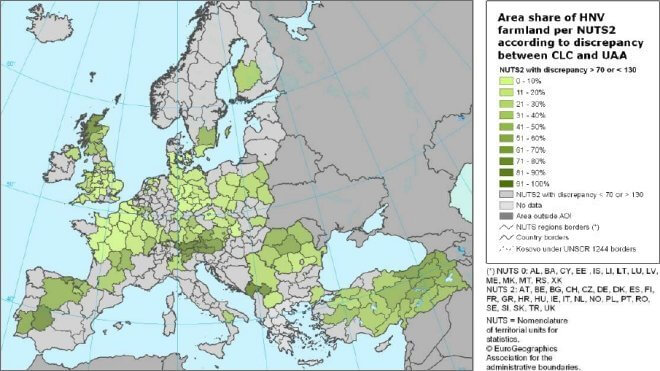Our list of the Top 10 Eco Destinations largely relies on UNESCO’s World Heritage natural sites and the metrics provided by Yale’s EPI. Restricting the gaze to Europe, however, it is possible to go even deeper and get useful information concerning specific topics and areas of interest.

Sustainable Tourism in Europe’s Nature – Natura 2000 Is World’s Largest Network of Protected Areas
The core of Europe’s strategy for environmental protection is represented by Natura 2000, the largest coordinated network of protected areas in the world, that comprises more than 27,000 sites, covering around 18% of the total terrestrial and marine area of the European Union at 28 members.
The aim of the Natura 2000 Network is to protect vulnerable habitats and species across their natural range in Europe and ensure that they are restored to, or maintained at, a favourable conservation status.
But how does it work? In a nutshell, each country identifies the most deserving natural areas and submits them to the European Commission. Only if approved, they’re recognized as Sites of Community Importance (SCIs) and can eventually become Special Areas of Conservation (SACs) or Special Protection Areas (SPAs), if the site is particularly important for the conservation of wild bird species.
The top countries in terms of size of the protected area within the N2K network are Spain, France, the UK, Italy, and Sweden, while those that protect the largest part of their territory are Slovenia, Croatia, Bulgaria, Slovakia, and Cyprus.

Important Bird Areas (Left) and Prime Butterfly Areas (Right) – Source: High Nature Value Farmland in Europe
Further data analysis and research can give more insights. Thanks to the 2006 study High Nature Value Farmland, for example, we found out that Spain, Italy, Romania, Poland, Hungary, and Slovakia are the most attractive destinations in Europe for birdwatching (Avitourism), and that butterflies lovers would do well to plan a trip to Austria, Sweden, Czech Republic, Slovakia, Spain, or France.
With the 2012 update of the study, we also learn that the areas which can boast the best conservation of rural biodiversity, mainly due to low-intensity farming practices, are located in the UK, Austria, Spain, Romania, France, and Serbia.
Playing a bit with the numbers one can build their own mapping, based on the type of habitat or on the flora and fauna present throughout the continent.

Area Share of HNV Farmland – Source: High Nature Value Farmland in Europe
The natural wealth of a certain area is definitely a deciding factor in the choice of travel destination, but it can’t be the only one. Thus, in view of 2017, declared by the UNWTO “International Year of Sustainable Tourism for Development“, we believe it is also essential to know how the protected areas are managed.
In this sense, you may be inspired by the 61 good practice examples of Natura 2000 management on the NNP and EU Commission websites, respectively divided by country and theme (wetlands, farming, forests, rivers, marine).
Even more useful could be the filter made by the EUROPARC Federation, an NGO that for over forty years provides practical tools for nature conservation and sustainable development of Europe’s biodiversity. Earlier this month, they awarded 11 new sustainable destinations and other 8 which have renewed their commitment to a higher quality tourism experience. Overall, about 10% of the surface of the Natura 2000 Network is managed by EUROPARC members.
In conclusion, from the restoration of deciduous forest in Söderåsen National Park (Sweden) to the successful cooperation between Italy and Slovenia in the Julian Alps Transboundary Ecoregion, Europe is regularly at the forefront of environmental protection. Now it is up to us to make sure that “Sustainable Tourism for Development” does not remain just a slogan for next year.
